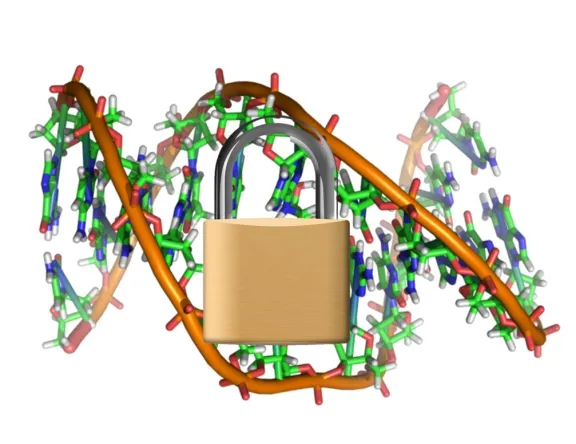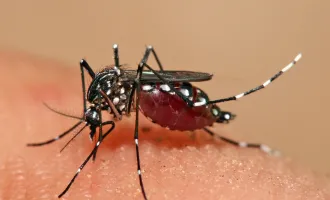
Experts Weigh In On Gene Patents
Last summer, the United States’ Supreme Court decided that patents held by Myriad Genetics over the BRCA1 and BRCA2 genes — variants of which predispose certain individuals to breast cancer — were not valid, closing at least one chapter on years of litigation involving the company.
To discuss the legal, ethical and economic implications of gene patents, Bay Area’s chapter of the Oxbridge Biotech Roundtable (OBR) recently invited a panel of experts to the University of California, San Francisco to try to answer the question: Are gene patents good for innovation and health care?
The panel consisted of Jacob Sherkow, Fellow at the Stanford Law School Center for Law and the Biosciences; John West, CEO of the genome diagnostics company Personalis; Bart Wise, Attorney at Wise IP Law; and William Gunn, head of Academic Outreach for the software company Mendeley.
Intellectual Property is Complex: A Disclaimer
The event was structured as a debate, and the four guests were split up into two teams and asked to deliver arguments either for or against the patentability of human genes. For the purposes of the exercise, each speaker took only one position.
However, the arguments surrounding patenting and intellectual property in the health sciences are nuanced and complex. Therefore, while their remarks are summarized below, specific attribution of who said what has been intentionally omitted to prevent confusion between the speakers’ statements in the debate and their real-life beliefs.
A pre-event poll indicated that a majority of attendees thought that genes should not be patented, indicating a perhaps surprising uniformity of opinion around the issue. Voting at OBR’s event on the same topic at the San Diego chapter resulted in a similar outcome.
If there was one lesson to be learned that evening, however, it was that the issue is complicated, and there is probably no “one-size-fits-all” solution to intellectual property. Patent laws must be written carefully with foresight for the direction of the field and a sophisticated understanding of the biological systems at play.
The Patent System Is an Economic Policy Tool
The patent system was specifically built into the United States Constitution as an economic policy tool to encourage investment in innovation. Since the National Institutes of Health and other government sources cannot meet all financial need in therapeutic research and development, private investment becomes an essential driver in bringing new drugs and diagnostics to market.
Because this process takes many years to advance through development, clinical trials and regulatory approval, proponents of gene patenting argue that investors need very good assurance that they’ll make a return on their investment.
Additionally, investors want to know that the intellectual property (IP) they’re investing in can be protected in the long run.
Some argue that patent law may actually encourage innovation by requiring companies and researchers to invent workarounds. The personal genomics company 23andMe, for example, offers testing for three BRCA variants as part of a larger panel of tests for genetic polymorphisms.
However, it may be difficult to work around very broadly defined patents, such as those covering naturally occurring genomic sequences, and the 23andMe tests would have likely infringed on Myriad’s patents anyway, though Myriad never pursued legal action against them.
While allowing financial rewards for investment seems fair and necessary, exactly how to do this without blocking innovation by others remains unclear.
Aside from patent protection, there are other ways to incentivize investment, such as Food and Drug Administration regulatory exclusivities (i.e. the FDA won’t approve another version of the same drug during the exclusivity period), tax credits, streamlined or more predictable approval processes during FDA review, and other tailored solutions.
For example, the GAIN (Generating Antibiotic Incentives Now) Act, signed into law in 2012, aimed to accelerate development of new antibiotics, by offering manufacturers five years of guaranteed market exclusivity and priority FDA review for molecules that target qualifying pathogens.
Who Owns Our Genes?
One of the most impassioned arguments against the patentability of genes typically stems from the notion that facts and products of nature aren’t patentable, and that a private company shouldn’t own or control information about ourselves.
Indeed, when the U.S. Supreme Court heard AMP vs. Myriad Genetics last summer, several attempts were made to delineate where natural processes end and human ingenuity begins.
While a tree is clearly a non-patentable product of nature, does carving a baseball bat from that tree render the bat patentable merely by its isolation from the wood? Myriad had claimed that BRCA1 and BRCA2, when isolated from the rest of the genome, were chemically distinct molecules, having had the covalent bonds separating them from their genetic context severed.
This treatment of genes as mere DNA molecules ignores that the real value of a gene, isolated or otherwise, derives from its informational content. Antiquated patent rules based solely on physical properties become problematic when applied to other molecules, such as DNA, antibodies or proteins.
Regardless, the debate may already be evolving. Twenty years ago, when researchers at the University of Utah made their initial discoveries that several mutations in the BRCA1 and BRCA2 genes correlated with elevated risk of breast cancer, isolating a gene was non-trivial. Now that the human genome has been sequenced, however, in a sense there are no more genes to be “discovered.”
In the future, discussion will likely move to whether individual gene variants may be patented. However, with multiplexing technologies, it could become impractical and expensive to patent and defend hundreds of polymorphisms uncovered in a given screen.
The key will be to develop far-sighted patent rules that balance a commitment to private industry and protection of investment with rational ideas of what should and should not be protected.
How do Gene Patents Affect Patients?
With much discussion revolving around the economic implications of gene patenting, it becomes easy to lose sight of the real goal of drug development: to treat patients and meet unmet medical needs in a safe and accessible way.
Indeed, one of the greatest benefits of patent law is that it requires immediate disclosure of patented discoveries to the public, which could guide doctors when treating patients. Without patent protection, companies would be likely to keep the results of research and clinical studies secret for as long as possible to maintain a competitive edge in the market.
On the other hand, proprietary ownership of genetic information may make it difficult for patients to seek a second opinion before undergoing expensive or invasive treatments. With the newly passed Affordable Care Act (i.e. “ObamaCare”), many more people will be insured and may seek preventative care.
One company’s monopoly on a particular preventive diagnostic test would likely result in a higher cost for that test. Indeed, while health insurance providers typically foot most of the $3,000 Myriad charges for its BRACAnalysis test, the high price tag could put a strain on the system when applied on a larger scale.
Competition could make diagnostic health care more affordable, especially as personalized and preventative medicine become the new standards of treatment.
Others argue, however, that paying a premium for new treatments now ensures the availability of cheaper alternatives in the future, while protecting the innovative process that led to their development.


